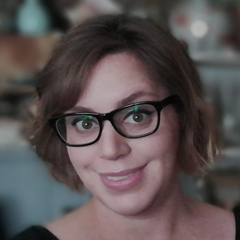
Composing A Floral Still Life
Katie LiddiardDescription
Next, Katie says, build interesting rhythms. Perhaps there’s a color you’ll want as a focal point; group the flowers with that color for impact, offsetting other colors against it in a rhythmic but dynamic pattern, pulling the eye up and through the arrangement. Let the flowers “be themselves” as Katie does, rather than controlling them, for a natural and interesting scene. Add flowers, then edit if an area feels heavy or awkward as you create balance and movement. It’s okay to coax blooms forward and gently open the petals, or cut stems to different heights.
It’s time to add greens. Think of leaves as accessories, as Katie does, and don’t let them become distractions. Buy flowers and greens at the same time so they look right together. With each addition, step back and look at the whole. Take your time, thinking about your final painting and what your color harmonies will be. And squint! It helps to compress your value range so you see your arrangement differently. When you have that wonderful feeling of “that’s it!” and your setup feels balanced, rhythmic, and pleasing, you’re ready to paint.